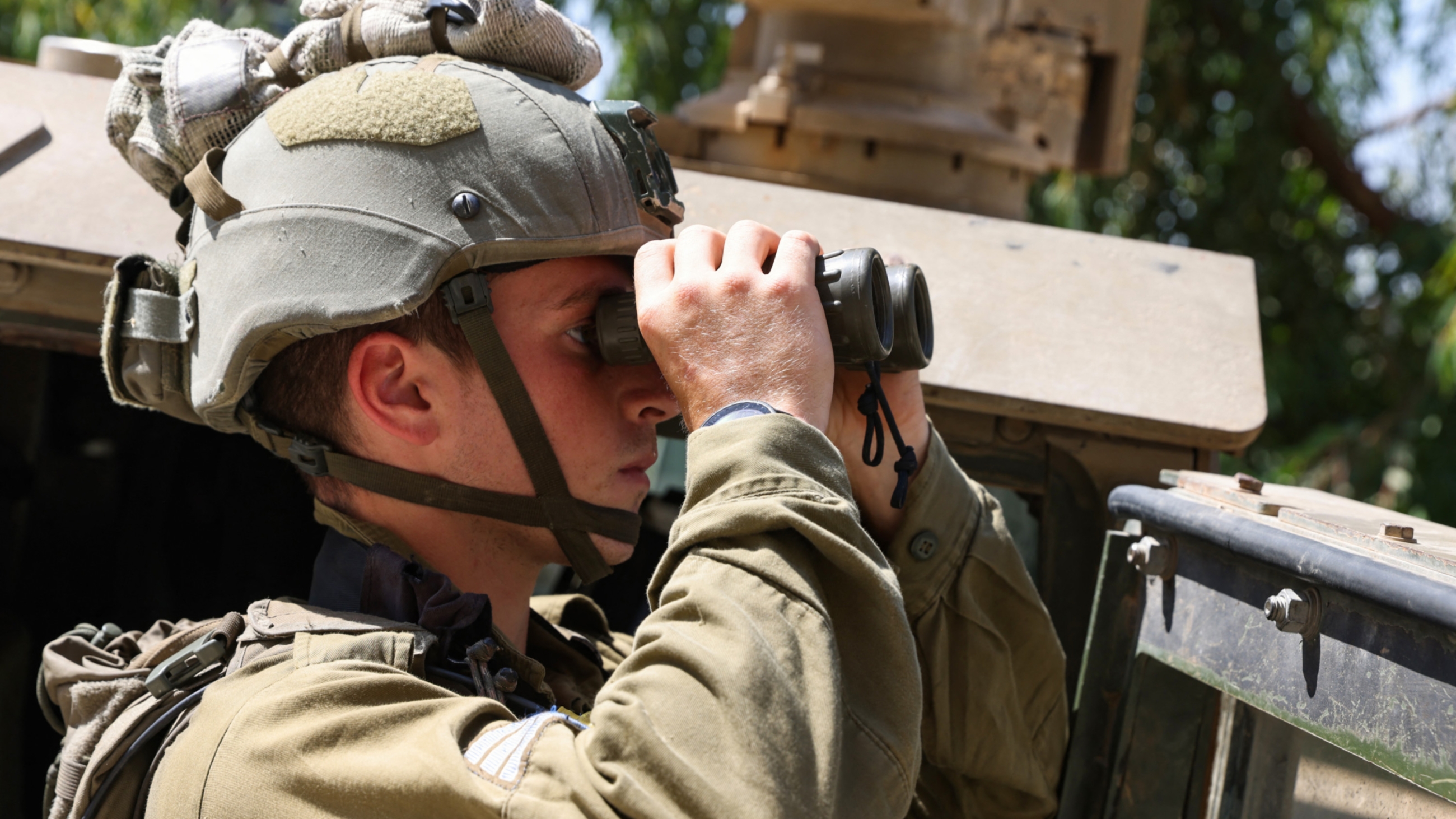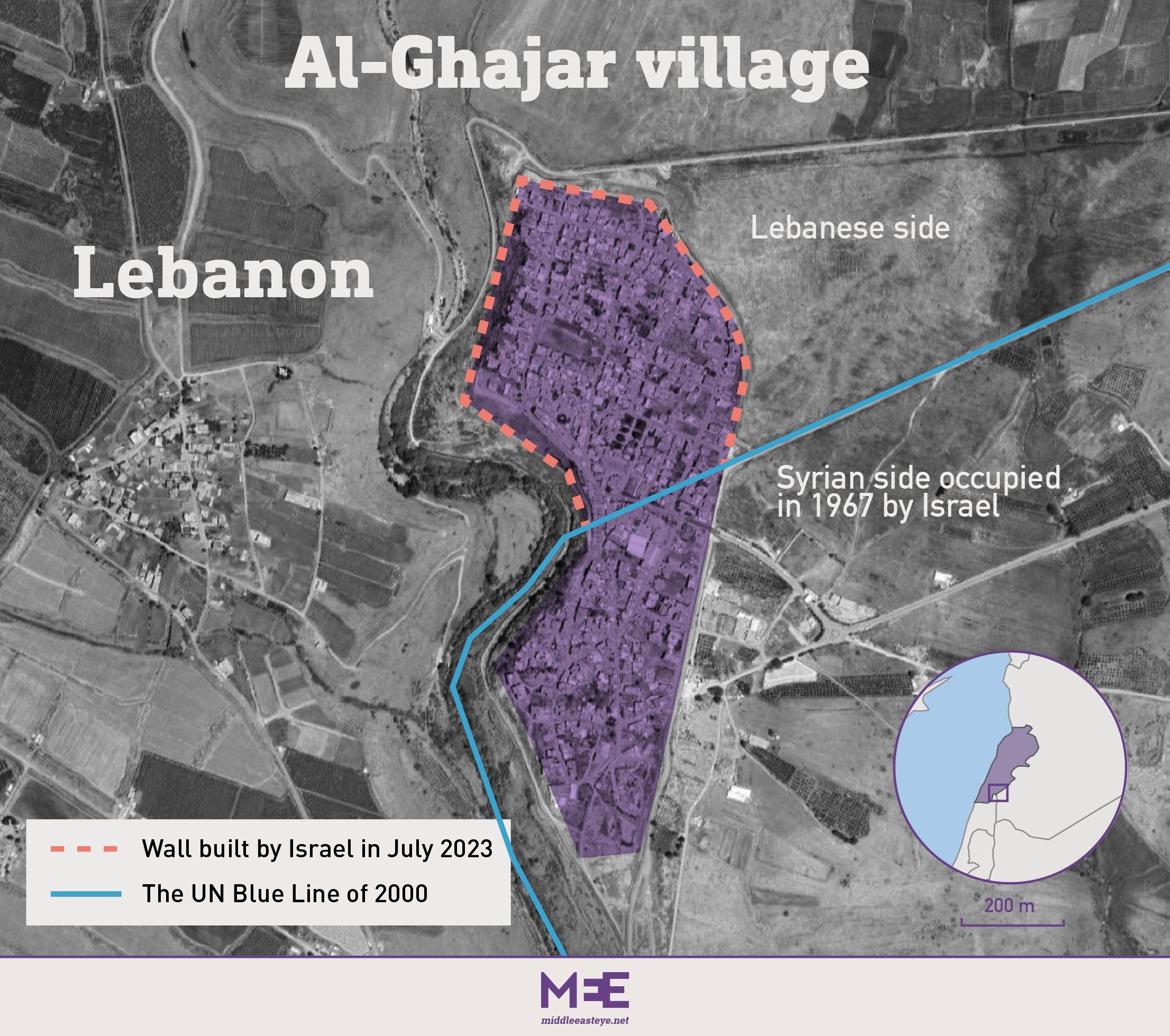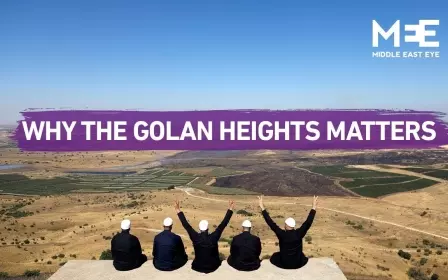Israel-Lebanon: What's happening at the Blue Line?

Tensions at the Lebanon and Israel border fence have become a daily concern since the Israeli army finished building a wall in July incorporating the northern part of Al-Ghajar village in the occupied Golan Heights.
Protests by Lebanese farmers, standoffs between Israeli and Lebanese soldiers, the firing of missiles and Israeli shelling of southern Lebanon have all been intensifying the situation since March.
In recent months, Israel has been building a wall made of concrete blocks along part of the UN Blue Line that demarcated Lebanese and Israeli territory in 2000, when Israel ended its 20 years' occupation of south Lebanon.
The two countries remain foes, and no official border separates them, except the Blue Line, which is made of blue barrels and runs from the Mediterranean to the Golan to the east.
On Tuesday, Lebanon's caretaker prime minister, Najib Mikati, said his country would be ready to demarcate the entire southern boundary with Israel.
The Lebanese government also said it would be willing to dismantle two tents set up in June by the Hezbollah movement in Shebaa Farms - a contested area in southern Lebanon - if Israel retreats from the northern part of Al-Ghajar village.
Lebanon considers the northern part of Al-Ghajar as Lebanese, while Israel says it is part of the Golan Heights, a Syrian territory that Israel annexed in 1981 in a move never recognised by the international community.
Hezbollah's tents in Shebaa Farms, known to Israelis as Mount Dov, drew the ire of the Israeli security establishment, who sought the involvement of the UN Interim Force in Lebanon (Unifil) to remove one of the two tents last week.
Israel's Defence Minister Yoav Gallant warned against Hezbollah activity in Sheba Farms.
“Don’t underestimate our strength and determination,” Gallant said.
Shelling and crossfires
The Lebanese and Israeli sides never meet face-to-face but use Unifil, which patrols the border fence, as a mediation channel.
Unifil called on all parties to "exercise restraint and refrain from taking actions that might exacerbate the situation".
In April, the Israeli army shelled southern Lebanon and accused a Palestinian armed group of firing a barrage of rockets toward northern Israel.
This was the most significant incident to date.
However, the Israeli army also shelled south Lebanon last week after two rockets were launched from the area.
One of the rockets fell near Wazzani village in southern Lebanon, while the second rocket landed near the disputed village of Al-Ghajar.
Yesterday, Israeli media reported that dozens of Lebanese soldiers and plainclothes individuals crossed the Blue Line and entered an area near Manara, an Israeli kibbutz in the northwestern part of the Upper Galilee.
Israel's army radio said that on 5 July, while Israel conducted engineering work near the fence, 30 people crossed the Israeli boundary, approached a bulldozer working on the land and stayed in the area for 20 minutes.
An anti-tank missile was reportedly fired from Lebanon and landed near Kibbutz Manara on 4 July.
Al-Ghajar village
Although territorial disputes have long been a thorny issue between Israel and Lebanon, the standoffs in recent months near the border fence have escalated.
Lebanese farmers from villages had protested against Israel's attempts to fence their land along the Blue Line, including around Kfar Shuba, Al-Arqoub and Ayta ash-Shaab.
On 5 July, Israel fenced off Al-Ghajar village, which is located on the borders of Lebanon, Israel and the Golan Heights.
Its almost 3,000 residents call themselves Syrian and are primarily from the Alawite sect.
Many of Al-Ghajar residents south of the UN Blue Line of 2000 had taken Israeli citizenship after the area was annexed by Israel in 1981.
It was occupied by Israel in 1967, and many of its residents had been vocal about being part of Israel and refusing to be under Lebanese hegemony, accusing the Lebanese state of indifference and abandoning them.
Al-Ghajar residents lived under 20 years of the Israeli occupation of south Lebanon, and amid the absence of rule of law, the village expanded to the north on lands belonging to the Lebanese state and on Mari village.
In 2000, when Israeli forces left southern Lebanon after an 18-year occupation, Al-Ghajar residents saw their village being split into two halves: the south of the Blue Line remained under Israel, while the north part was considered part of Lebanon.
Relatives and neighbours, who for years lived across the street, were separated by a fence one morning and found themselves living in a different country, namely in an "enemy state".
Israel has never withdrawn its forces from Al-Ghajar village following the boundary demarcation in 2000, despite an Israeli cabinet plan to do so in 2010.
The village was designated as a closed military zone for 22 years, but in November 2022 it was opened to Israeli tourists and visitors with permission from the Israeli army.
Much like the Shebaa Farms and Kfar Shuba hills, Al-Ghajar remains in Israel's hands but with one difference - namely that Al-Ghajar territory is now surrounded by a wall fence, incorporating it into Israel and separate from Lebanon.
This article is available in French on Middle East Eye French edition.
Middle East Eye propose une couverture et une analyse indépendantes et incomparables du Moyen-Orient, de l’Afrique du Nord et d’autres régions du monde. Pour en savoir plus sur la reprise de ce contenu et les frais qui s’appliquent, veuillez remplir ce formulaire [en anglais]. Pour en savoir plus sur MEE, cliquez ici [en anglais].






